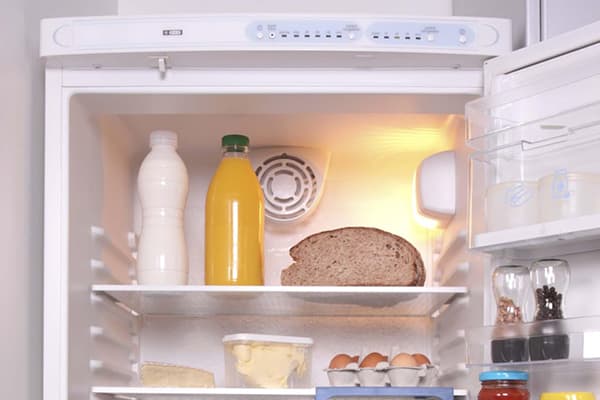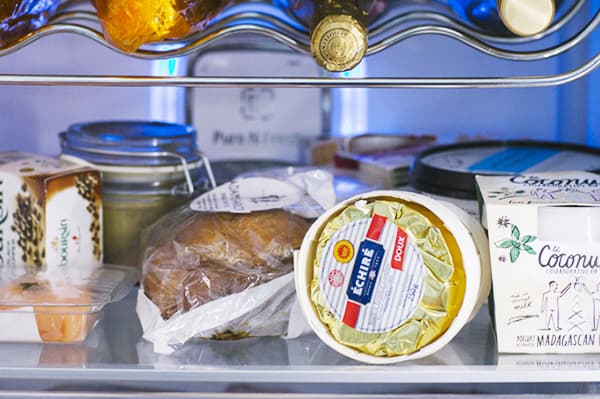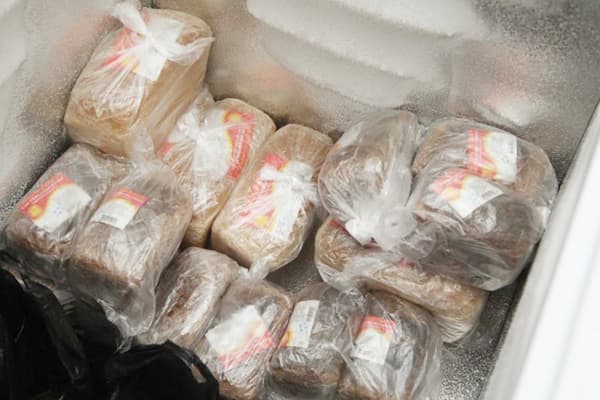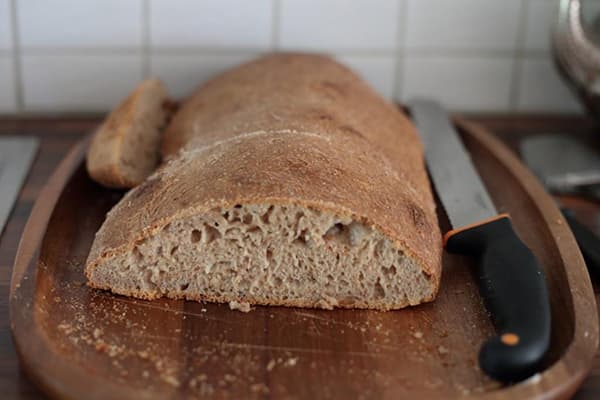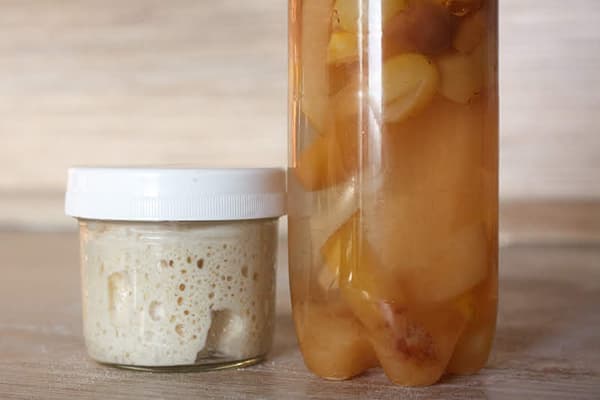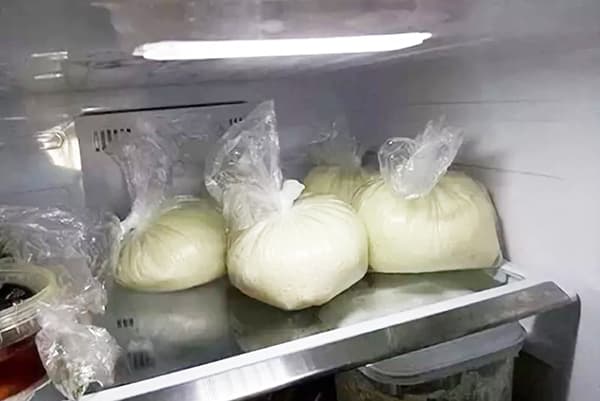Is it possible to store sourdough, dough and ready-made bread in the refrigerator?
Content:
The tradition of storing bread in the refrigerator has become popular not so long ago, but has already gained a lot of fans. The benefits and harms of this method are actively discussed by the advocates of healthy lifestyle and simply thrifty housewives, who are tired of throwing out yesterday's cracked bread. However, food industry experts have their own - scientific - opinion on how to properly store rolls and loaves. They say: you can put baked goods in the refrigerator, but you should do it right.
Why keep bread in the fridge?
The standard period for which bread remains edible is determined by sanitary rules and averages 72 hours. You can extend it by changing the temperature at which bakery products are stored.
Is it possible to store bread in the main chamber?
Most housewives who store bread in the refrigerator put it in the main compartment, where the temperature ranges from 0 ° C to + 6 ° C - depending on the technical characteristics of the device and the load on the camera.
You can’t do this, because with such a thermometer testimony, starchy foods get stale faster, their taste changes for the worse, and the crust from soft or crispy turns to hard stone. This is due to the crystallization of starch, which is much more active under the influence of low temperature and constant air movement.
There are only two reasons that justify putting bread in the refrigerator:
- heatwave;
- high humidity.
They contribute to the deterioration of baking much more than coolness.
However, the worst option is to bookmark the storage of bread, which has not yet had time to cool. So that he does not ventilate, he is carefully put in a bag and tied in a knot. In this case, moisture actively evaporates, settling on the walls of the bag in the form of drops, and in combination with a low ambient temperature creates ideal conditions for the development of mold. Already 4-5 hours later, the surface of the loaf will be covered with shaggy gray-green and white fungi. Such bread is strictly forbidden to eat, even if you cut the crusts.
How much bread is stored in the freezer?
A freezer is an ideal place to store bread if you are unable to buy fresh pastries daily. At temperatures below -18 ° C, it can be stored for three weeks, and if the cold reaches -23 ° C, the product will remain edible even five weeks later.
When preparing bread for freezing, the following nuances should be considered:
- The shelf life of thawed bread is only a few hours, so a large loaf should be divided into portions and packaged in packets in the amount that the family needs for one meal.
- If the bread has already begun to deteriorate or has hardened, frost will not return this process back. All that remains to be done with such a product is to send it for release.
- During freezing, it is advisable to free the chamber from other products (if possible without losing their quality). Thus, the bread "stiffens" faster and retains more moisture, which will positively affect its taste after thawing.
- The recommended method of freezing is in a special plastic bag, while the slices must be laid out in one layer. When the bread has frozen enough, you can proceed to packing in individual packaging.In frozen form, it is not forbidden to keep rye and wheat bread together.
All of the above is true both for ordinary yeast and yeast-free baking, and for rich.
It is important to remember that bakery products easily absorb extraneous aromas. When stored next to fish and other specific products, their smell penetrates even through plastic packaging.
How to defrost bread?
There are two ways to return bread to a soft state:
- The fastest and easiest is to heat in the microwave. It will be possible to use it in a few minutes, but pieces that are not eaten within half an hour will have to be disposed of. This is due to the fact that with superfast defrosting, a second fermentation process begins with the participation of pathogenic microflora, and such bread can be harmful to health.
- A longer, but also safer way is natural defrosting. Bread should be left for several hours at room temperature. After a complete defrost, it will be suitable for eating for two hours.
How to store sourdough in the refrigerator?
Ferment, unlike already baked bread, is usually stored in the main chamber of the refrigerator, since a temperature of + 2 ° C to + 10 ° C is optimal for maintaining its vital functions. In a colder environment, bacteria and yeast, which are responsible for fermentation, “fall asleep”, and in a warmer environment — they multiply too actively, which leads to spoilage. If the temperature exceeds + 30 ° C, the leaven dies.
For long-term storage, the sourdough is frozen. Before this, it is mixed with a large amount of flour (rye or wheat - depending on the type) and rubbed with your hands until you get small crumbs, which are poured into a clean airtight bag and put in the freezer. Without loss of quality, it can lie there at temperatures below -18 ° C for about a month.
A few days before making bread, the sourdough is poured into a jar and left on the table for several hours, after which it is poured with warm water (volume ratio 1: 1). Next, the leaven is fed for several days according to the usual scheme, so that it gains strength.
Rules for storing bread dough in the refrigerator
There are a myriad of bread recipes that differ, among other things, in the way of proofing. In some cases, the dough is kept warm, in others - in the cold. However, you can’t store it in the refrigerator for longer than 12 hours, because during this time the yeast and bacteria use all available sugar, as a result of which the dough will peroxide.
To bake from a pre-prepared dough, it should be frozen by placing it in a sealed bag. Shelf life depends on temperature:
- at -18 ° C - about 30 days;
- at -23 ° С - up to 40 days.
When storing bakery products, sourdough and dough, it is important to observe the temperature regime, and also remember that re-freezing is prohibited. If, after removing from the refrigerator, the product has an unusual taste or smell, its use in food may be poisonous. The reason for such changes, as a rule, is an unnoticed increase in temperature in the chamber by the owner.
